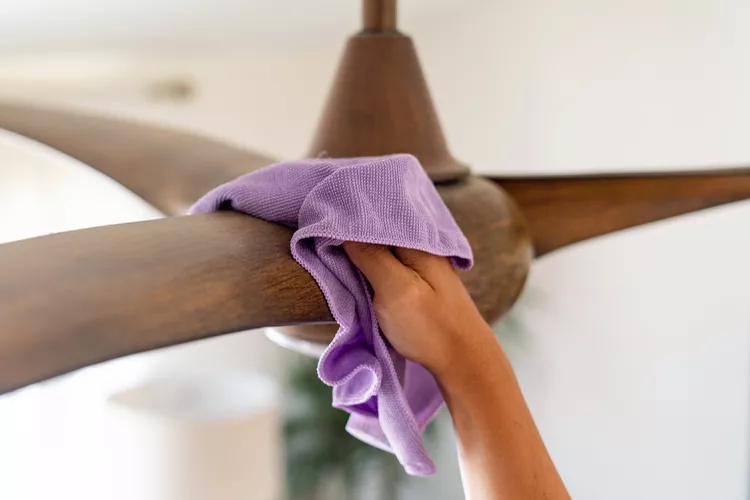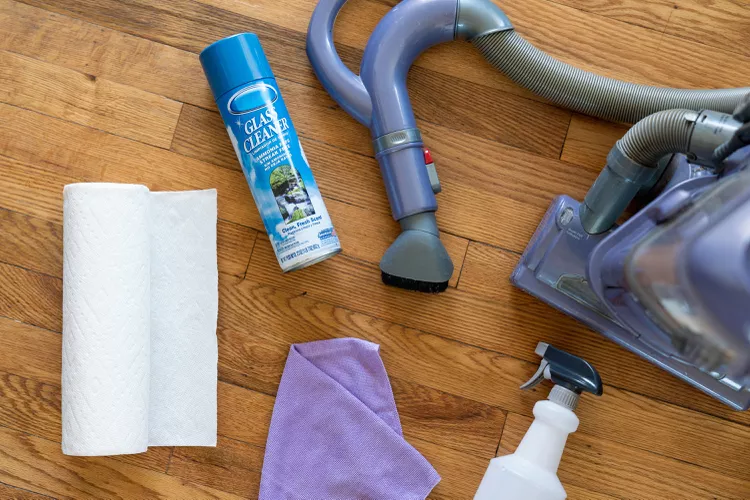
The sun is shining, the birds are singing, and the windows are open. It is all lovely, but letting in the fresh air unfortunately means an uptick in the housekeeper’s oldest enemy—dust. This is especially tough in the spring when allergens move through the air and into your house via dust particles. Suddenly, you’re sneezing and sniffling and wondering how to get rid of that pesky thin film that’s covering everything you see.
What’s worse? Most feather dusters don’t actually pick up dirt, they just push it around. You can spend six hours dusting your entire home from ceiling to floor and still see specks everywhere you look if you’re not using the right methods and supplies.
Follow the steps below to learn how to get rid of dust in your home. Your home will be sparkling and speck-free in no time
How Often Should You Dust Your Home?
To really get rid of dust for good (or at least for a while) you’ll need more than just a feather duster. Our recommendation to keep dust out of your home is to give it a good dusting/cleaning at least once per month for easy-to-reach areas, like your ceiling fan and upholstery. Tackle more difficult spots every three to six months, like high windows and ceilings, small items like picture frames, and shelves.
What You’ll Need
Equipment / Tools
Dusting Tools
- 1 Microfiber cloth
- 1 Bar mop towel or roll of paper towels
- 1 Lightweight canister vacuum with a round brush attachment
Materials
Cleaning Products
- 1 All-purpose cleaner
- 1 Glass cleaner
Instructions

How to Rid Your Home of Dust
Gather the Right Supplies
Typical feather dusters, and even some Swiffer dusting products, don’t actually pick up dust—they just move it from one spot to another. The solution? A microfiber cloth.
If you haven’t tried one yet, microfiber is the holy grail of dusting material. The durable fabric actually catches and picks up dust instead of just moving or spreading it. When the cloth gets dirty, you can throw it in the laundry through the washer and dryer or hand-wash, both methods work great. You can snag a pack of microfiber cloths online for just a few dollars, and they are totally effective, totally reusable, and totally worth it.

This article is a lifesaver for anyone battling dust in their home! The comprehensive tips and strategies provided offer a holistic approach to tackling dust and maintaining a cleaner living environment. From regular vacuuming and dusting to addressing hidden culprits like air vents and upholstery, the advice is practical and easy to implement. Thanks for the thorough guide on achieving a dust-free home!
Thank you for these invaluable tips on eliminating dust from every corner of the home! I appreciate the emphasis on preventive measures like using air purifiers and washing bedding regularly to minimize dust accumulation. The advice on deep cleaning high-traffic areas and investing in quality cleaning tools is also incredibly helpful. With these strategies in place, I’m confident I can achieve a dust-free home and breathe easier knowing my living space is cleaner and healthier.
This article provides a comprehensive guide to tackling dust in the home, offering practical tips for achieving a cleaner and healthier living environment. The step-by-step approach makes it easy to follow, and the inclusion of both short-term solutions and long-term strategies ensures lasting results. By addressing dust at its source and implementing regular cleaning routines, readers can enjoy a dust-free home and breathe easier.
As someone who struggles with dust allergies, I appreciate the thorough advice provided in this article. The emphasis on identifying and eliminating dust sources, such as air vents and soft furnishings, is particularly helpful in preventing dust buildup. The use of microfiber cloths and vacuum cleaners with HEPA filters are great recommendations for effectively capturing and removing dust particles. Overall, this article offers valuable insights for anyone looking to create a cleaner and healthier home environment.
This article offers a comprehensive approach to dealing with dust, covering everything from cleaning techniques to preventative measures. I found the tips on using air purifiers and humidity control devices especially useful for maintaining low dust levels in the home. The emphasis on regular cleaning routines and decluttering also resonated with me, as these habits can significantly reduce dust accumulation over time. Overall, this article provides practical solutions for keeping dust at bay and improving indoor air quality.
Regularly dusting surfaces, using high-efficiency air filters, and maintaining proper humidity levels can help minimize dust accumulation in your home.